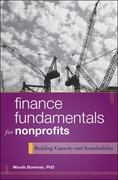

Equation (1):

2. (30 points max), Time-varying prices of capital. The optimality condition for capital when there is a tax is (1-T)MPK:1 +Pr+ (1-8)= p.(1+r), (2) where p, is the price of new capital at time t, & is the annual rate of depreciation, r is the net real rate of return (constant), MPK is the real marginal product of capital and 7 is the tax rate on capital income. This extra credit assignment asks you to solve for the price of capital in an environment with time-varying prices of capital goods. (I.e., we will allow the price p, and the tax rate T, to vary over time.) a. Referring to the lecture notes, derive an expression for p, in terms of future values of T, and MPK. What is the intuition for this expression? b. Suppose the marginal product of capital MPK is constant (say MPK = m). Show that P. -- Pula (17.m +(+72)6-rove) +(179) (97)m+. c. Suppose T=0.35, r= .05 and m= 1. Consider two types of capital (type I and type II). Type I is long-lived capital with a low depreciation rate 8 =.05 (5% per year). Type II is short-lived capital with a depreciation rate 8 = 25 (25% per year). What are the steady state prices pTypeI and pType II ? (Use the relationship from (b) or use equation (1) to answer this question.) Type ! Type ll be in d. Suppose that there is a phased-in tax cut to T=0.20 which goes into effect 10 years from now, so T, = {.35.35.35.35.35,.35,.35.35,.35,20,20.....}. At year 10, the new tax rate is T=0.20 indefinitely. i. Assuming that there will be no change in m, what will p" and p year 9? (Hint: from year 10 on the tax rate is constant. Use your answer from (c) above to solve). ii. Now that you know pypeI and pype I, you can use equation (1) to solve for papel and peppel in each period t = 1, ...8. (E.g., start with period 8 and work your way backward. If you like, use a spreadsheet program like Excel to answer this question). iii. What is the immediate percent change in p." in response to the tax change? What is the intuition for this effect? Type 1 ! and P Type 11 PP. (1+r)-D: 11 (1) 2. (30 points max), Time-varying prices of capital. The optimality condition for capital when there is a tax is (1-T)MPK:1 +Pr+ (1-8)= p.(1+r), (2) where p, is the price of new capital at time t, & is the annual rate of depreciation, r is the net real rate of return (constant), MPK is the real marginal product of capital and 7 is the tax rate on capital income. This extra credit assignment asks you to solve for the price of capital in an environment with time-varying prices of capital goods. (I.e., we will allow the price p, and the tax rate T, to vary over time.) a. Referring to the lecture notes, derive an expression for p, in terms of future values of T, and MPK. What is the intuition for this expression? b. Suppose the marginal product of capital MPK is constant (say MPK = m). Show that P. -- Pula (17.m +(+72)6-rove) +(179) (97)m+. c. Suppose T=0.35, r= .05 and m= 1. Consider two types of capital (type I and type II). Type I is long-lived capital with a low depreciation rate 8 =.05 (5% per year). Type II is short-lived capital with a depreciation rate 8 = 25 (25% per year). What are the steady state prices pTypeI and pType II ? (Use the relationship from (b) or use equation (1) to answer this question.) Type ! Type ll be in d. Suppose that there is a phased-in tax cut to T=0.20 which goes into effect 10 years from now, so T, = {.35.35.35.35.35,.35,.35.35,.35,20,20.....}. At year 10, the new tax rate is T=0.20 indefinitely. i. Assuming that there will be no change in m, what will p" and p year 9? (Hint: from year 10 on the tax rate is constant. Use your answer from (c) above to solve). ii. Now that you know pypeI and pype I, you can use equation (1) to solve for papel and peppel in each period t = 1, ...8. (E.g., start with period 8 and work your way backward. If you like, use a spreadsheet program like Excel to answer this question). iii. What is the immediate percent change in p." in response to the tax change? What is the intuition for this effect? Type 1 ! and P Type 11 PP. (1+r)-D: 11 (1)









